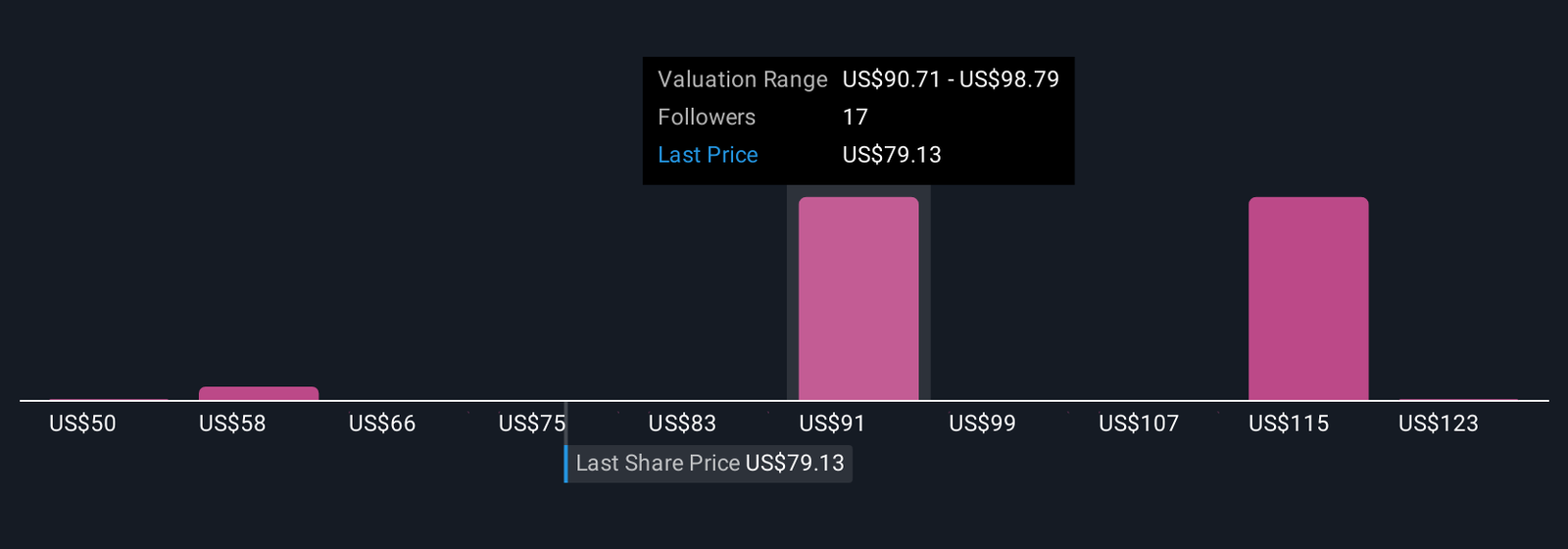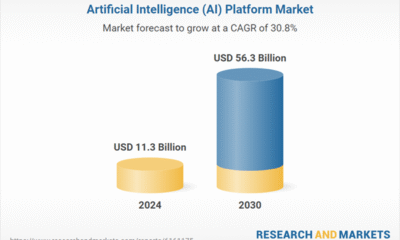Tools & Platforms
Tech Giants Invest Billions in AI Infrastructure Boom

In the heart of Silicon Valley, the race to dominate artificial intelligence is accelerating at a breakneck pace, with tech giants pouring unprecedented sums into infrastructure and development. Recent earnings reports from major players like Microsoft, Meta, Amazon, and Alphabet reveal a collective commitment to AI that is reshaping corporate budgets and investor expectations. This surge in spending is not just about keeping up; it’s a strategic bet on AI as the next foundational technology, akin to the internet or cloud computing.
Microsoft, in particular, has emerged as a frontrunner, reporting robust revenue growth driven by its AI initiatives. In its latest quarterly earnings, the company highlighted how Azure, its cloud platform, is benefiting from AI demand, with revenues soaring. This comes amid announcements of massive capital expenditures aimed at expanding data centers equipped for AI workloads.
Escalating Investments in AI Infrastructure
According to a report from CNBC, Microsoft anticipates spending $80 billion on AI-enabled data centers in fiscal 2025, with over half of that investment targeted within the U.S. This figure represents a significant uptick from previous years, underscoring the company’s confidence in AI’s revenue potential. Brad Smith, Microsoft’s Vice Chair and President, emphasized in a blog post on Microsoft On the Issues that this spending is key to harnessing AI’s transformative power for economic growth and global leadership.
Industry-wide, the trend is even more pronounced. A post on X from analyst Beth Kindig noted Microsoft’s $80 billion projection, up nearly 60% from 2024, while another from Tsarathustra highlighted comparative spending: Amazon at $65 billion, Google at $49 billion, and Meta at $31 billion over the past year. These investments are fueling a boom in data center construction, chip procurement, and software development, as companies vie for supremacy in generative AI and machine learning applications.
Microsoft’s Revenue Boom from AI
Delving into Microsoft’s financials, the company’s AI business has surpassed an annual revenue run rate of $13 billion, marking a 175% year-over-year increase, as stated by CEO Satya Nadella in a recent earnings call summarized on X by Quartr. Azure’s growth stands out, with a 31% rise, contributing to overall revenue climbing 12% and earnings before interest and taxes up 17%. This performance is detailed in a New York Times article, which notes a $27.2 billion quarterly profit, alleviating investor concerns about the payoff from hefty AI investments.
Yet, this spending spree isn’t without risks. As reported in WebProNews, Big Tech’s collective $344 billion outlay for 2025 focuses on data centers and chips, but faces hurdles like regulatory scrutiny and energy demands. Despite these, tangible returns are emerging, particularly in healthcare and productivity tools, signaling that the AI bubble fears may be overstated.
Comparative Spending Across Tech Titans
Looking beyond Microsoft, Meta’s projected $65 billion in capital expenditures for 2025, as mentioned in X posts from Oguz O. and Flows Invest, reflects a similar all-in approach. Amazon’s $97 billion and Google’s $70 billion add to a hyperscaler total nearing $320 billion, primarily for AI infrastructure. A Gizmodo article titled “Silicon Valley’s AI Spend Goes Berserk as Microsoft Starts Cashing In” captures this frenzy, noting how quarterly earnings from these firms are tied by booming AI investments, with Microsoft beginning to reap substantial rewards.
Silicon Valley’s AI fervor is also evident in stock movements. Microsoft’s shares surged following its earnings, as covered by Silicon Valley, with the company planning over $30 billion in quarterly spending on AI data centers. This has propelled Microsoft toward a $4 trillion valuation, per an X post from Assad Dar, amid expectations of over $400 billion in industry-wide AI spend for 2025.
Implications for Industry and Economy
For industry insiders, this spending trend signals a shift toward AI-centric business models. Microsoft’s Copilot and Azure integrations are driving adoption across sectors, with cloud revenue hitting $168 billion annually, as per an X update from Marvin Labs. However, job cuts—9,000 at Microsoft alone, according to CEO Today Magazine—highlight the human cost of this pivot, balancing efficiency gains with workforce disruptions.
Economically, the U.S. stands to benefit, with much of the investment staying domestic. Yet, as Industry Leaders Magazine points out, this expansion is geared toward cloud and AI-driven growth, potentially widening the tech divide globally. Investors are watching closely, with AI’s promise of revolutionizing industries from healthcare to finance justifying the bets, even as total capex surges to $364 billion across Big Tech, per an X post from AFV GLOBAL.
Future Outlook and Challenges
Looking ahead, Microsoft’s guidance for fiscal 2025 anticipates double-digit revenue growth, with Intelligent Cloud revenues projected between $28.6 billion and $28.9 billion for Q1, as shared on X by Evan. This optimism is tempered by the need for sustained innovation and regulatory navigation. The company’s $100 billion-plus AI bet, including partnerships and acquisitions, positions it to lead, but competition from OpenAI-backed ventures and rivals like Google intensifies the stakes.
In conclusion, Silicon Valley’s AI spending bonanza, led by Microsoft’s revenue successes, marks a pivotal era. As these investments translate into real-world applications, the tech sector’s trajectory will define the next decade’s economic powerhouses, rewarding those who invest wisely while challenging laggards to catch up.
Tools & Platforms
Humans are being hired to make AI slop look less sloppy

Brands caught using AI have continued to face backlash from consumers. Last month, Guess sparked outcry online when it featured an AI-generated model in an advertisement that appeared in Vogue.
So even outside of any obvious mistakes made by AI tools, some artists say their clients simply want a human touch to distinguish themselves from the growing pool of AI-generated content online.
To Todd Van Linda, an illustrator and comic artist in Florida, AI art is easily discernible, if not by certain telltale inconsistencies in the details, then by the plasticine effect that defines AI-generated images across a range of styles.
“I can look at a piece and not only tell that it’s AI, I can tell you what descriptor they used to generate it,” Van Linda said. “When it comes to, especially, independent authors, they don’t want anything to do with that because it’s so formulaic, it’s obvious. It’s like they stopped off at Walmart to get a bargain cover for their book.”
Authors come to him, he said, because they know that AI-generated art fails to capture the hyperspecific “vibe” of their individual story. Often, his clients can only give him a rough idea of what they want. It’s then Van Linda’s job to decipher their preferences and create something that draws out the exact feeling each client seeks to evoke from their art.
Van Linda said he also gets approached by people who want him to “fix” their AI-generated art, but he avoids those jobs now because he has realized those clients are typically less willing to pay him what he believes his labor is worth.
“There would be more work involved in fixing those images than there would be in starting from a clean sheet of paper and doing it right, because what they have is a mismatched collection of generalities that really don’t follow what they’re trying to do,” he said. “But they’re trying to wedge the square peg into the round hole because they don’t want to spend any more money.”
The low pay from clients who have already cheaped out on AI tools has affected gig workers across industries, including more technical ones like coding. For India-based web and app developer Harsh Kumar, many of his clients say they had already invested much of their budget in “vibe coding” tools that couldn’t deliver the results they wanted.
But others, he said, are realizing that shelling out for a human developer is worth the headaches saved from trying to get an AI assistant to fix its own “crappy code.” Kumar said his clients often bring him vibe-coded websites or apps that resulted in unstable or wholly unusable systems.
His projects have included fixing an AI-powered support chatbot that gave customers inaccurate answers — and sometimes leaked sensitive system details due to poor safety measures — and rebuilding an AI content recommendation system that frequently crashed, gave irrelevant recommendations and exposed sensitive data.
“AI may increase productivity, but it can’t fully replace humans,” Kumar said. “I’m still confident that humans will be required for long-term projects. At the end of the day, humans were the ones who developed AI.”
Tools & Platforms
How New Cloud and AI Security Partnerships at Akamai Technologies (AKAM) Have Changed Its Investment Story

- On August 13, 2025, Aptum announced a new partnership with Akamai Technologies to deliver cloud migration and transformation services, while Akamai also revealed a collaboration with Aqua Security to bolster AI-powered cloud security for enterprise customers.
- These recent deals signal Akamai’s growing efforts to accelerate innovation in cloud and AI security, aligning its platform with evolving enterprise technology priorities.
- We’ll examine how Akamai’s expanded cloud services partnerships may influence its investment narrative and future growth outlook.
Explore 23 top quantum computing companies leading the revolution in next-gen technology and shaping the future with breakthroughs in quantum algorithms, superconducting qubits, and cutting-edge research.
Akamai Technologies Investment Narrative Recap
To be comfortable owning Akamai Technologies, investors must believe the company can offset secular declines in its legacy delivery business by scaling its cloud, compute, and security offerings quickly enough to drive sustained revenue and profit growth. The recent partnerships with Aptum and Aqua Security underscore Akamai’s intent to align its platform with rising AI and security demands, but they do not yet materially alter the short-term catalyst of accelerating cloud revenue or reduce the main risk of margin pressure from capital-intense expansion.
Among the latest developments, Akamai’s August 13 announcement with Aptum stands out, as it connects directly to the ongoing catalyst of expanding Cloud Infrastructure Services (CIS) revenue. By partnering to offer integrated cloud migration services, Akamai aims to deepen enterprise adoption of its cloud platform, which is essential for driving the top-line growth expected as part of its transformation story.
Yet, investors should not overlook that increasing capital expenditures to support these new cloud and AI initiatives could pressure net margins if scaling proves slower or costlier than anticipated…
Read the full narrative on Akamai Technologies (it’s free!)
Akamai Technologies’ narrative projects $4.9 billion in revenue and $765.1 million in earnings by 2028. This requires 6.1% yearly revenue growth and a $340.5 million earnings increase from $424.6 million currently.
Uncover how Akamai Technologies’ forecasts yield a $95.20 fair value, a 20% upside to its current price.
Exploring Other Perspectives
Six members of the Simply Wall St Community estimate Akamai’s fair value between US$50.32 and US$131.10 per share. While bullish cloud catalysts are top of mind, many investors continue to weigh margin and profitability risks before setting expectations for the company’s path forward.
Explore 6 other fair value estimates on Akamai Technologies – why the stock might be worth as much as 66% more than the current price!
Build Your Own Akamai Technologies Narrative
Disagree with existing narratives? Create your own in under 3 minutes – extraordinary investment returns rarely come from following the herd.
Contemplating Other Strategies?
Don’t miss your shot at the next 10-bagger. Our latest stock picks just dropped:
This article by Simply Wall St is general in nature. We provide commentary based on historical data
and analyst forecasts only using an unbiased methodology and our articles are not intended to be financial advice. It does not constitute a recommendation to buy or sell any stock, and does not take account of your objectives, or your
financial situation. We aim to bring you long-term focused analysis driven by fundamental data.
Note that our analysis may not factor in the latest price-sensitive company announcements or qualitative material.
Simply Wall St has no position in any stocks mentioned.
New: Manage All Your Stock Portfolios in One Place
We’ve created the ultimate portfolio companion for stock investors, and it’s free.
• Connect an unlimited number of Portfolios and see your total in one currency
• Be alerted to new Warning Signs or Risks via email or mobile
• Track the Fair Value of your stocks
Have feedback on this article? Concerned about the content? Get in touch with us directly. Alternatively, email editorial-team@simplywallst.com
Tools & Platforms
I were student today, I would …, say Billionaire Mark Cuban on taking advantage of opportunities that internet and AI have made possible

Billionaire entrepreneur Mark Cuban has shared his views on teens are prioritising financial management. Cuban says that US teens are placing unprecedented importance on financial success and he feels that the shift is not only understandable but its full of opportunity. As per the data from John Burns Research and Consulting, shared by Blue Rose Research’s David Shor, 36% of American 12th graders in 2022 said money is “extremely important” to them—the highest percentage in over five decades. That’s a sharp rise from the 26% average seen through the early 2010s.
Gen Z’s money mindset
The reasons behind the financial focus are clear: stagnant wages, increasing college costs, inflation and the and the constant stream of wealth-centric content on platforms like TikTok and YouTube. Many of the Gen Z teens have grown up watching their families navigate economic hardship and now face their own financial pressures.“Zoomers care more about making money than any generation in at least 50 years,” Shor posted on Bluesky. Cuban responded, “Doesn’t surprise me. Every kid has people around them making money posting videos. Beats a newspaper route!”
Mark Cuban’s advice: Learn AI, teach AI, monetize AI
In an interview with CNBC, Cuban mentioned what he would do if he were 16 today: learn how to write prompts for AI tools like ChatGPT, teach others how to use them, and offer those skills to local businesses. “Doesn’t matter if I’m 16,” he said. “I’d be teaching them as well.”Cuban believes prompt engineering—crafting effective inputs for AI tools—is a high-value skill that can generate serious income, even six figures, without a college degree.
Books and bots over garbage bags
Reflecting on his own entrepreneurial beginnings selling garbage bags door-to-door at age 12, Cuban now urges teens to embrace digital tools. “Read books and learn how to use AI in every way, shape and form you can,” he posted on Bluesky. “It is a living library that gives you responses and can help no matter who you are or where you live.”Instead of selling physical products, Cuban says today’s youth can sell knowledge, skills, and content—often to a global audience.As Gen Z continues to redefine what it means to earn, Cuban’s message is clear: the internet and AI aren’t just tools—they’re gateways to financial independence, creativity, and a future where hustle meets innovation.
-
Tools & Platforms3 weeks ago
Building Trust in Military AI Starts with Opening the Black Box – War on the Rocks
-

 Ethics & Policy1 month ago
Ethics & Policy1 month agoSDAIA Supports Saudi Arabia’s Leadership in Shaping Global AI Ethics, Policy, and Research – وكالة الأنباء السعودية
-

 Business2 days ago
Business2 days agoThe Guardian view on Trump and the Fed: independence is no substitute for accountability | Editorial
-

 Events & Conferences3 months ago
Events & Conferences3 months agoJourney to 1000 models: Scaling Instagram’s recommendation system
-

 Jobs & Careers2 months ago
Jobs & Careers2 months agoMumbai-based Perplexity Alternative Has 60k+ Users Without Funding
-

 Funding & Business2 months ago
Funding & Business2 months agoKayak and Expedia race to build AI travel agents that turn social posts into itineraries
-

 Education2 months ago
Education2 months agoVEX Robotics launches AI-powered classroom robotics system
-

 Podcasts & Talks2 months ago
Podcasts & Talks2 months agoHappy 4th of July! 🎆 Made with Veo 3 in Gemini
-

 Podcasts & Talks2 months ago
Podcasts & Talks2 months agoOpenAI 🤝 @teamganassi
-

 Jobs & Careers2 months ago
Jobs & Careers2 months agoAstrophel Aerospace Raises ₹6.84 Crore to Build Reusable Launch Vehicle

















